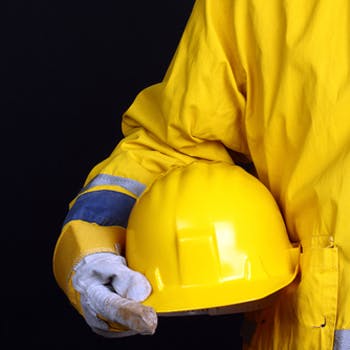When it comes to health and safety rules in the workplace, it’s better to be proactive rather than reactive to avoid problems in your workplace.
One of WorkSafe Victoria’s strategies is to encourage medium sized businesses to integrate safety into their business management systems, to ensure they practice prevention rather than reaction, and gain commitment from owners/directors to the process.
Often owners and directors are simply unaware that systematic prevention-based health and safety management and promotion leads to reduced WorkCover premiums and other cost reductions. This is why the ‘Seven Pillars of Safety‘ has been developed.
The fourth pillar, Training and Supervision, seeks to ensure supervisors and workers understand the potential impacts of poor performance and fulfill their OHS/RTW roles and responsibilities, ensuring minimisation of injuries due to rule breaches.
So, do you have the fourth pillar in place in your workplace? Here are some areas where you can ensure you can be proactive about your health and safety requirements.
Area: New staff (includes contractors)
What to look for:
- Induction process
Expected practice:
Induction:
- Covers work process safety issues including supervision
- Covers RTW information
- Addresses training needs/site conditions
- Is signed off by an authorised person
- Recurs on a regular basis
Unacceptable practice:
- No reporting indicators assigned for OHS
- Designation unclear / not evident
Area: Training
What to look for:
- Needs identification
- Verification of training effectiveness
- Ongoing support
Expected practice:
- Formal training needs analysis conducted and signed off by authorised person.
- New and experienced staff regularly assessed.
- All training verified for effectiveness.
- Programs based on coaching and mentorship actively supported by leadership team.
Unacceptable practice:
- No training needs analysis Or only after incident
- No verification
- No ongoing programs
Area: Supervision
What to look for:
- Responsibility in place
- Process
Expected practice:
- Basic supervision responsibilities are recorded in position descriptions and reviewed.
- Supervision processes understood by all staff, both for on and off site work.
- Supervision responsibilities and processes for all levels of management documented and reviewed whenever changes to work practice occur.
This simplified approach is designed to support personnel in medium businesses that have OHS and RTW responsibilities on top of their normal duties. It will establish and confirm their role as the ringmasters, not the experts and as facilitators, not doers of everything.
WorkSafe have found that these people lack confidence, skills and capability, but are expected to have all the answers and are often presented with an overwhelming amount of complex information. The aim is to provide them with support that is easy to access and tailored to their needs.
At Work Safety Hub we are using the seven pillars as a guideline. This means that businesses now have a much simpler view and understanding of their roles and responsibilities.

